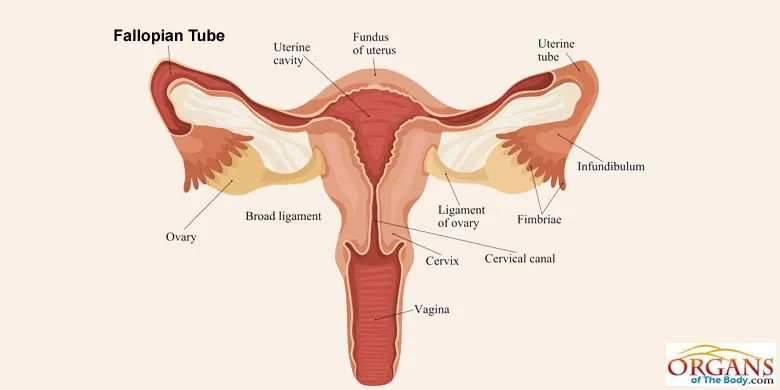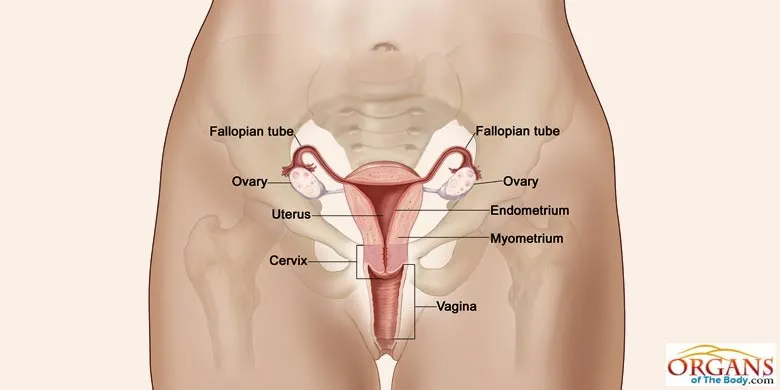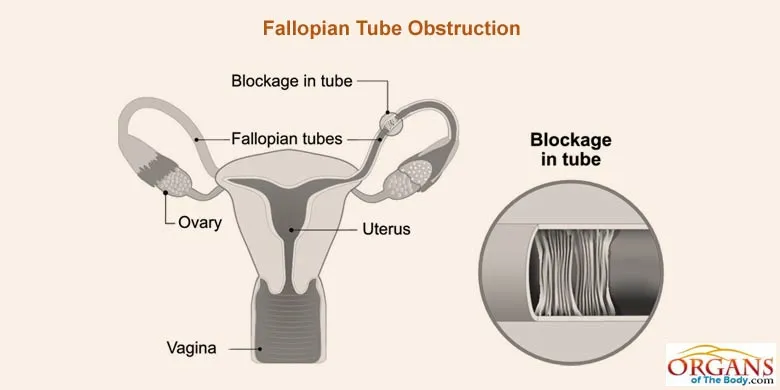Fallopian Tubes Function & Location in Female Reproductive System
In This Article You Will Learn:
- Where exactly does the egg get fertilized?
- Which two parts in the reproductive system are connected by a fallopian tube?
- What are the three main jobs performed by the oviduct?

Described in 1561 by Gabrielle Fallopio, an Italian anatomist and physician, a fallopian tube is a uterine appendage that serves as a simple connection between the uterus and the ovary.
It is also known as the salpinx, the uterine tube or the oviduct.
Did you know only one of the millions of sperms released is able to fertilize an egg? In contrast to its male counterpart, the female reproductive system is extremely complex.
While many factors lead to the event of successful fertilization, a minute discrepancy anywhere can cause failure.
In the pretty complicated process of getting pregnant, at the very least, a male sperm has to reach and unite with an ovum in order to fertilize it.
Among several possible reasons which can prevent the union of a male gamete with its female counterpart, one is that of blockage in the fallopian tube/s.
What Is Fallopian Tube Function?
Acquainted with the fact that an oviduct plays a critical role in pregnancy, it would be interesting for you to learn about “What is fallopian tube function?” Simply put, serving as a direct link between the ovary and the uterus, the fallopian tube helps the mature egg travel from the former to the latter for its plantation in the womb.
After its release from the ovary, the mature female gamete musttravel down the oviduct to reach the womb.
In addition to acting as a passageway, the uterine tube also provides a platform to the sperm traveling up the tract to fertilize the egg, thus marking the onset of pregnancy.
Though a woman’s body houses two ovaries, only one of them matures and releases the oocyte every month during each menstrual cycle.
In case of blockage in the uterine tube, the egg is unable to meet and unite with the sperm, thus eliminating the chance of pregnancy.
Several treatments are available to open up the blocked tubes, including surgery.
One of the non-surgical means to reopen the blocked tube is FTR (Fallopian Tube Recanalization).
In this method, a speculum is used to keep the vagina (elastic muscular canal connecting the uterus to the outside world) open and a catheter or small plastic tube is inserted through the cervix into the womb.

Fallopian Tube Structure:
Measuring from 7 to 12 centimetre in length and usually less than 1 centimetre in diameter, a fallopian tube is distinguishable into four different parts, namely the infundibulum (lying closer to the ovary), the ampullary region (representing the main portion of the lateral tract), the isthmus (the narrower third segment), and the intramural (or interstitial) region.
The point where the fallopian tube opens into the uterine cavity is called the uterotubal junction.
The inside (or lumen) of each oviduct is composed of the simple columnar epithelium lined with cilia which along with the activity of the tubal muscle, help the zygote (fertilized ovum) to travel to the womb for its plantation and growth.
Li and Winuthayanon (2017), in their research work titled “Oviduct: roles in fertilization and early embryo development” claim that the oviduct not only hosts fertilization but also serves as the place for pre-implantation development of the embryo.
Uterine Tube Diseases:
The fallopian tube diseases account for a significant percentage of the cases of the infertility. They may be obstructed or scarred as a result of infection or disease.
Resulting from different causes, the blockage of the uterine tube prevents fertilization of the egg to occur.
It needs to be reopened as soon as possible for the sake of pregnancy.

The conditions such as infections, pelvic inflammatory disease, endometriosis and sexually transmitted disorders can damage the uterine ducts.
One of the top three causes of infertility, endometriosis is a commonly occurring painful disease affecting about 5.5 million women in North America alone.
Endometrium is the lining of the uterus which beings to thicken during a normal menstrual cycle in preparation for housing the developing embryo.
In case of endometriosis, the tissue very similar to endometrium starts growing outside the womb in or on the fallopian tubes, the ovaries, the cervix, the bowel, the bladder, the rectum, the vagina, and the lining of the pelvic cavity, etc.
Medication and surgery are the available options for the treatment of endometriosis.
Interesting Oviduct Facts:
- Fallopian tubes are the extremely fragile passageways connecting the ovaries with the womb.
- Fertilization occurs when the egg and the sperm travelling towards each other meet in the lumen of the fallopian tubes.
- Blockage or scarring of the oviduct accounts for a huge number of cases of infertility in women.
- Endometriosis is a condition which involves development of endometrium-like tissues in or on the fallopian tubes, the ovaries, and other structures of the reproductive system.


